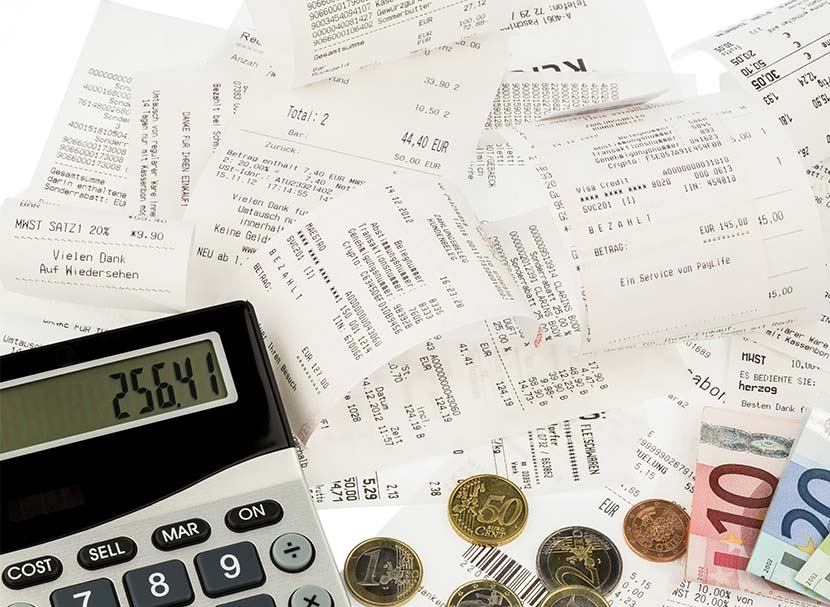#ReceiptsGotASpace2017
This is the year you will finally have a system for your receipts, right? So what are you going to do? How are you going to manage that? Do you have a plan or is it just in your head?
My blogs typically advise you to write things down as you plan them. Now might be a good time to grab your paper and pen.
Think through the types of receipts you deal with on a daily and yearly basis.
What are you stacking in your wallet and why? What are you throwing in that drawer that’s filled with paper and how will you possibly ever find what you need? Is that cubby cubicle over your desk looking like one big mish-mash of paper slips?
That is what I thought.
Implementing an Organizing System for Your Receipts
Here are a few easy tips for controlling those slips of paper that seem to leave an endless trail of stress.
- There is no need to carry receipts in your wallet forever. (If you are a Seinfeld watcher, think George Costanza and the wallet bust.)
- Establish a home for the different types of receipts.
- Look into scanning options for receipts such as NeatReceipts or Evernote for digital filing.
- If you like your paper, then think about the following zones as a way to keep everything in order. You might have other categories, so just jot those down as well.
- Personal (for possible return)
- Personal (household improvements for sale of house down the road)
- Personal/Business (insurance purposes)
- Personal/Business (tax deductions)
- Every week, empty your wallet and go through your mail. File accordingly. (I say this every week because most people are not disciplined enough to do this on a daily basis. If you are, more power to you.)
- As you set up your system, be sure to label according to the words that resonate with you. This way, you automatically know exactly where to go, like magic, when you’re on the hunt to find those white slips.
- Label by year, and label by month, if needed.
- You can use file folder jackets, a binder with sheet protectors, pockets for envelopes, or even zip lock bags if you have a system. Use whatever works best for you.
- The glue that will hold this together is the consistent filing at a set time each week. Otherwise, well you know the story. The days and weeks become months and then years.
These suggestions should help you have an easier time tracking, finding and managing those little slips of paper. One other tip, throw away any receipts that you will not need.
If you know you will never return something, if it does not give you a tax deduction, if you do not need to file a claim, if the record does not provide any leverage when you sell your home, then it’s probably safe to deposit it in the circular file or shredder.
Remember, the key to organizing your paperwork effectively is not to make it too complicated and to keep to the same system every year. That way, you will be able to file and retrieve your receipts automatically when you need them. It only takes about an hour to set up this system, and it is certainly worth the many hours it will save you in sorting through papers.
Good luck and watch the stress disappear.
Do you have any other ideas for organizing receipts? I hope you will share with us in the comments!






